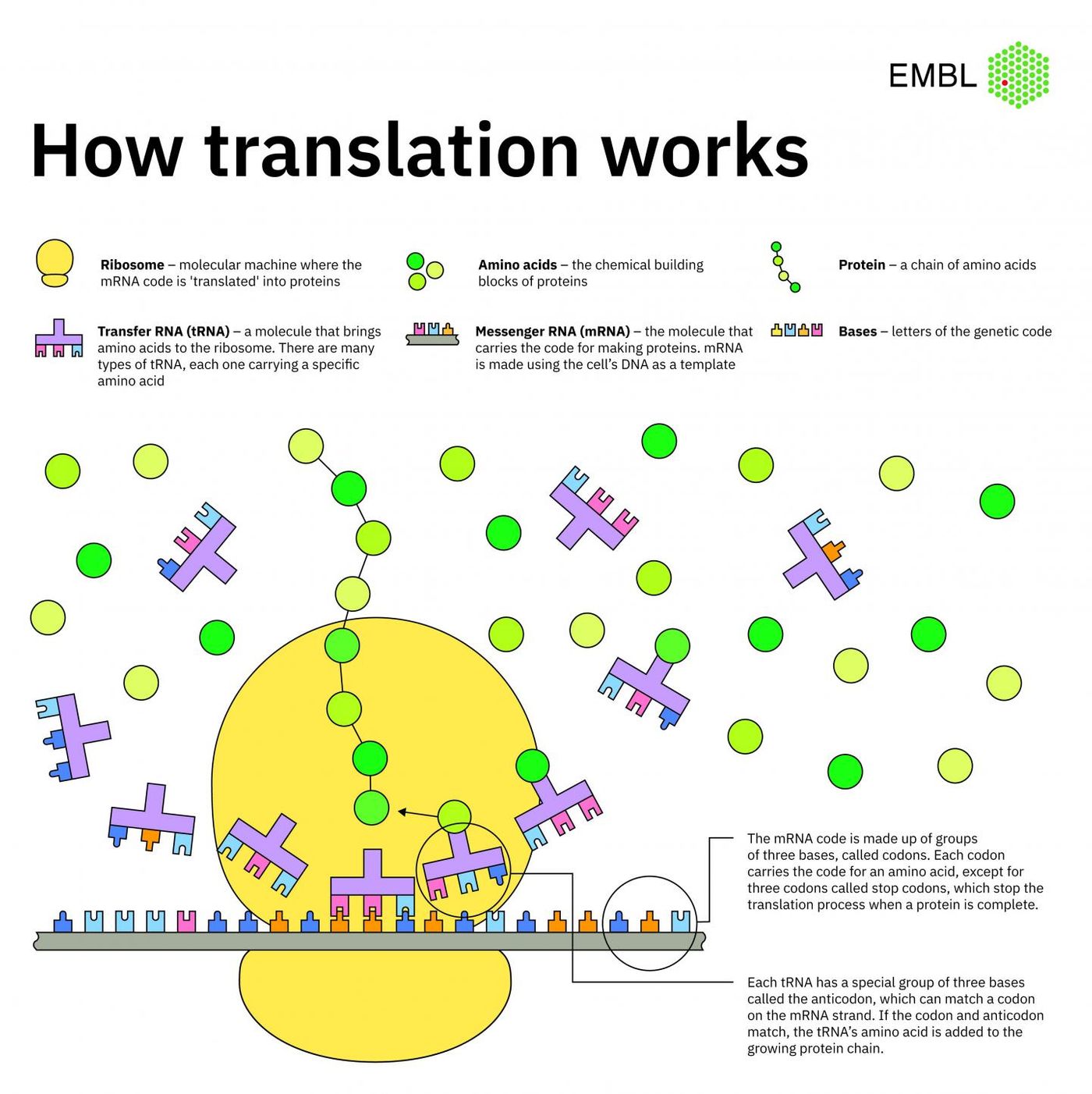Engineering Designer Organelles with Synthetic Amino Acids
Proteins are critical components of organisms that are used and arranged in specific ways. Genes are translated into proteins, which are made of amino acids, by cellular machinery. Synthetic biologists have made major advances in this area, and can take control of this process; they have now been able to utilize translation to build a synthetic, membraneless organelle. A team of researchers from the European Molecular Biology Laboratory (EMBL), JGU Mainz and IMB Mainz were able to engineer proteins using natural and synthetic amino acids to perform new functions. The work has been reported in Science and is outlined in the video.
"Our tool can be used to engineer translation, but potentially also other cellular processes like transcription and post-translational modifications. This might even allow us to engineer new types of organelles that extend the functional repertoire of natural complex living systems," explained graduate student and study co-first author Christopher Reinkemeier. "We could, for example, incorporate fluorescent building blocks that allow a glimpse inside the cell using imaging methods."
Translation is outlined in the graphic below, which omits that critical first step in creating proteins from genes, mentioned by Reinkeimeier - transcription. The overall process is complex, so the researchers utilized phase separation and cellular targeting to gather molecules together in a dynamic way; this also ensured that one organelle was made per cell.
Previous work by other groups in this area has created synthetic versions of the critical molecules that are involved in this process, including synthetic nucleotide bases (which create DNA) as well as synthetic amino acids. It seems there could eventually be many potential applications for this fully-engineered system. Organelles have naturally evolved to gain new functions in this past; this may just greatly accelerate the process.
"The organelle can make proteins by using synthetic non-canonical amino acids. Currently, we know of more than 300 different non-canonical amino acids - compared to twenty which are naturally occurring. We are no longer restricted to the latter ones," said study co-first author Gemma Estrada Girona. "The novelty we introduce is the ability to use these in a confined space, the organelle, which minimizes the effects on the host."
Related: Semi-synthetic Bacterial Cell Makes Unnatural Proteins
The researchers want to continue their work to engineer even smaller organelles to reduce the impact on the organism.
"In the end, we aim to develop a technique to engineer synthetic cellular organelles and proteins that do not affect the host machinery at all. We want to create a tool that does not have any uncharacterized effects. The organelle should be a simple add-on that allows organisms to do custom-designed novel things in a controlled fashion," said project leader Edward Lemke, a visiting group Leader at EMBL, Professor at JGU Mainz and Adjunct Director at IMB Mainz.
Sources: AAAS/Eurekalert! Via EMBL, Science









